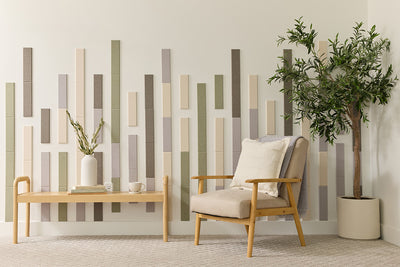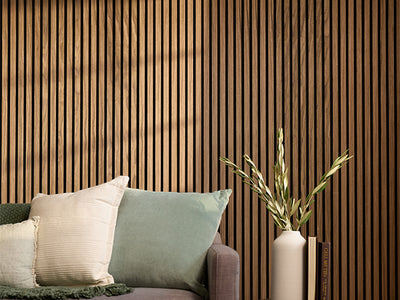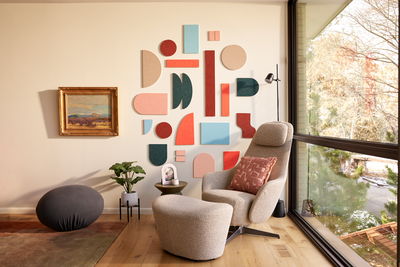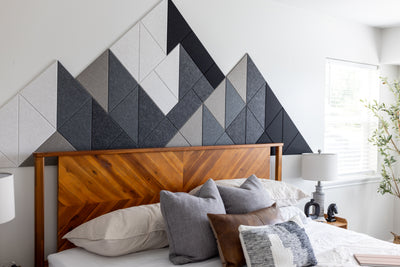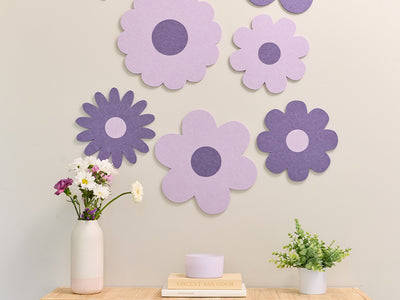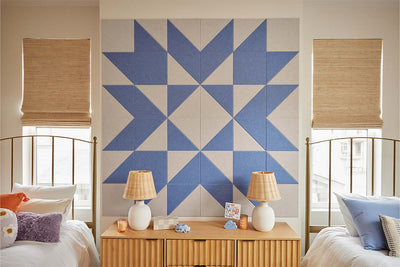Sound Dampening Spaces for People with Sensory Processing Disorder
Current home design trends celebrate great rooms and open concept living, but these spaces can be quite noisy. Sound from kitchen appliances and televisions that used to be caught by walls and doorways is now free to bounce around the main floor of a space, making it hard to get a break and enjoy quiet time.

Excess Noise and Mental Health
Too much noise is irritating for just about anyone, but for survivors of trauma, excess noise can be debilitating. There are people in PTSD treatment who can be triggered by environmental noise. If your home has enough ambient sound bouncing around to make you edgy, be aware that there are simple ways to reduce your noise-related stress.

From the Floor Up
If you have a hard surface floor, make sure you put down a rug. An edged section of carpet doesn't have to be expensive and can make your life much quieter. Additionally, take a look at your furniture. If it's soft and comfortable against your body, it will soak up sound.
You can improve your acoustics with peel-and-stick sound dampening panels in a pattern of your choosing. Whether you use a pre made design or design from scratch, there are felt squares that you can purchase in a variety of colors and patterns that you can either use in a grid or cut into smaller shapes to mix and match as you transform your room.

Window Coverings
Bare glass will add to the "bounce" of environmental noise. If your PTSD treatment includes the avoidance of sirens and other outside noises, be aware that you can improve your acoustics with foam backed drapes. Not only will these give you privacy and soak up sound bouncing around the space, but these can also help you enjoy a dark room and more restful sleep.
Wall Decor
If your living situation won't allow you to install peel-and-stick sound dampening panels, you can still transform your room and cut down on sound bounce. Often, cutting down on echo simply means breaking up the space with texture on one wall to prevent the bounce to the next hard surface.
For example, in a bedroom, you can hang a quilt as a headboard, window covering or a piece of art. If you don't have a quilt, find a pretty scarf or a fabric mandala.

Hang a curtain rod on the wall you want to cover. Choose a fabric you like in a pre made design or design from scratch with paint splatters, sprayed bleach or tie dye. Pin the fabric to a fleece blanket or flannel sheet so it lays flat, then clip the fabric to the blanket with café curtain hooks that pinch the fabric against the blanket. Slip the curtain hooks over a sturdy rod and hang the rod on the wall. Remove all pins but the ones at the top to let the fabric and blanket relax together and re-pin if needed. The fabric and the blanket don't have to be the same size; the blanket just needs to be a bit smaller and hang far enough away from the wall to create an air gap.
If the wall is concrete, you can do this with smaller pieces of fabric and peel and stick storage hooks. You can also use this treatment in a screen frame to add both sound dampening and privacy to a shared space.
Noise can be extremely stressful to a trauma survivor, and privacy is key to good mental health for everyone. If you find that you can't relax in your home, too much open space and echo may be part of the problem. Use sound-dampening tools to make your home restful and promote good mental health.

